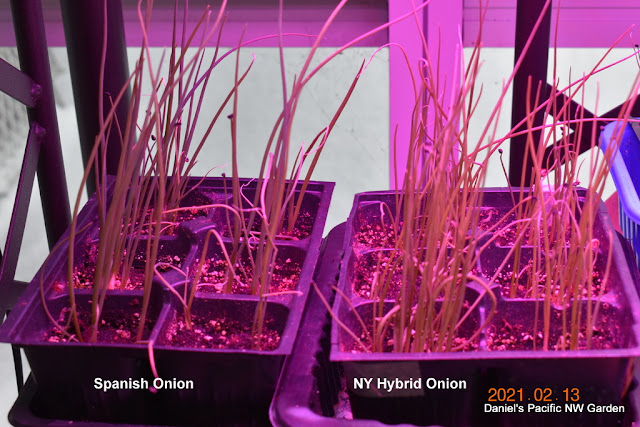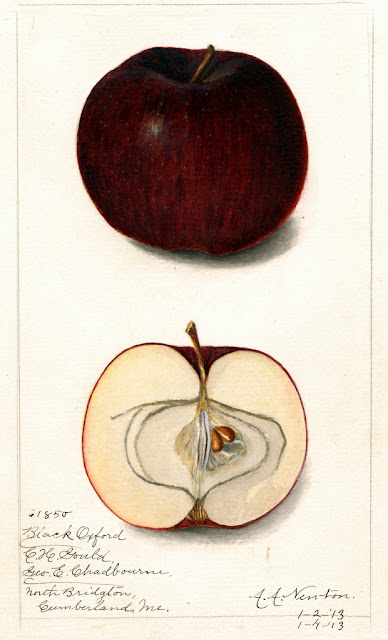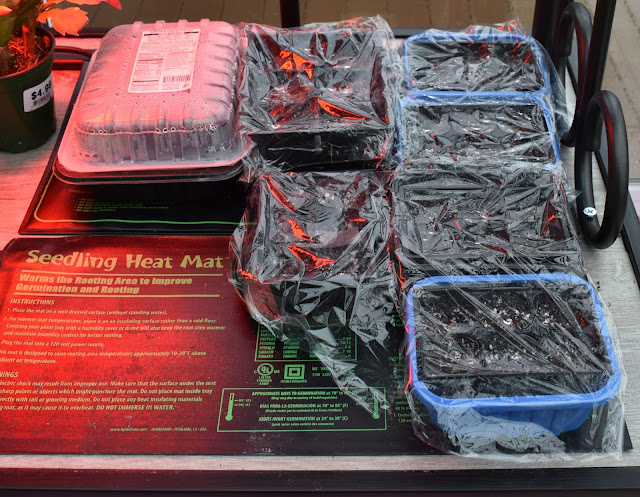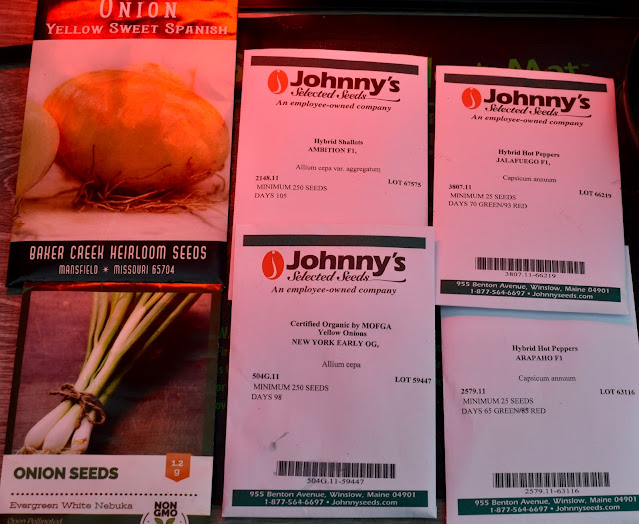Recovering from hospitalization, and raining outside, so no outdoor gardening for a while. I planted some tomato and potato seeds today.
Here are the varieties that I'm trying this year:
Potato Seeds - I never grew potatoes from actual seeds before. I'm skeptical. However, I like to try new things in the garden. Potatoes from seeds as opposed to "seed potatoes" that are actual small potato slices, have these advantages: The seeds store well, so I can buy in advance. Supposedly not carriers of diseases that the potato slices can carry. They have disadvantages: Probably smaller potatoes. Unknown entity at this time. Limited selection. No standard varieties, because those won't come true from seeds and some apparently wont even make seeds. I'm trying the F1 hybrid "Clancy". The seeds are pelleted and sold in a vial, in a typical seed envelope. I've only planted six cells, four seeds each.
Tomatoes - This year I'm just growing one of each variety, but more varieties. Those "Bodaceous" that I grew last year were awful, tasteless, not productive. So not this year. I'm growing some Russian varieties that are supposedly more likely to grow and produce in my cooler, shorter season climate. Also, I think these Russian tomatoes are not hybrids so are candidates for me to save seeds this fall. It's too early to start sauce tomatoes, these are just cherry, salad, and slicing tomatoes.
Muscovich - a 4-6 ounce slicing tomato, early (60 days), indeterminate, Russian. info from Victory Seeds: "Developed in the early 1970s at the famous N. I. Vavilov Institute of Plant Industry, Moscow, U.S.S.R"
Golden King of Siberia- a large, oxheart shaped slicing tomato, indeterminate, mid season (80 days), Russian, disease resistant,
Purple Russian - also called Ukranian Tomato brought back from Irma Henkle, according to multiple websites, indeterminate, mid season, 5-7 ounce. The photos look like a paste tomato.
Lemon Boy - I like this yellow slicer. I've been looking for seeds for years. Adaptable, disease resistant hybrid, indeterminate 7-8 ounces, midseason (72 days).
Sugar Rush - Cherry tomato. Indeterminate. 53 days. 3/4" to 1-1/4" fruits.
Braveheart - 1 ounce cherry tomatoes described as crack resistant, which is good because my usual sungold and supersweet-100 crack and split. 60 days.
Unicorn - included free in seed order. Indeterminate, described as "coctail tomatoes" but look like cherry tomatoes to me, 76 days.
Early Goliath - I've seen these offered and never tried them. I'm hoping for an early sandwich slice tomato. Disease resistant hybrid, 8 ounce which is a good size for me, 56 days, indeterminate.
Better Boy - I grow these every year. Midwest-type big hybrid tomato that is what I think when I think of garden tomato. 70 to 75 days, disease resistant.
Classic Beefsteak - heirloom 1-2 pound fruit, from Baker Creek. I got these because they are not hybrid, so if they do OK might save the seeds.
Yellow Volunteer Cherry Tomato - this was a yellow volunteer cherry tomato in my garden last year. It didn't get water or plant food and was crowded by other plants. I thought I would save some seeds and see what happens. It was a smaller plant, actually tasted as good as any cherry tomato.
This was the vial of pelleted potato seeds. I've never seen seeds packaged like this before. Interesting and handy.


























